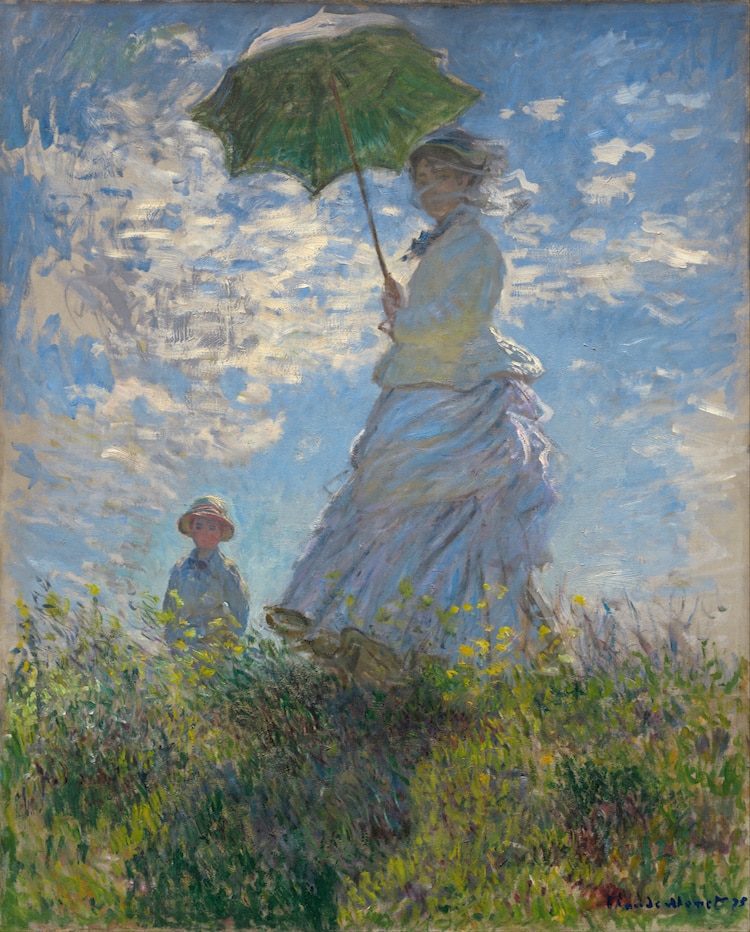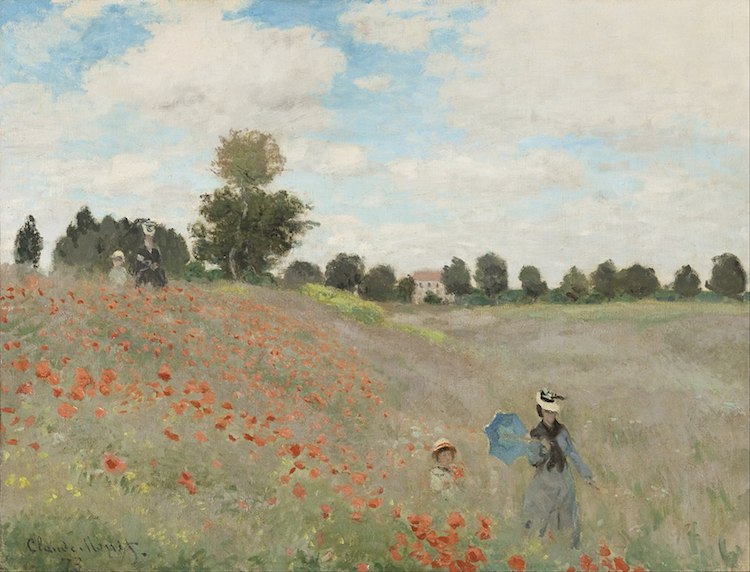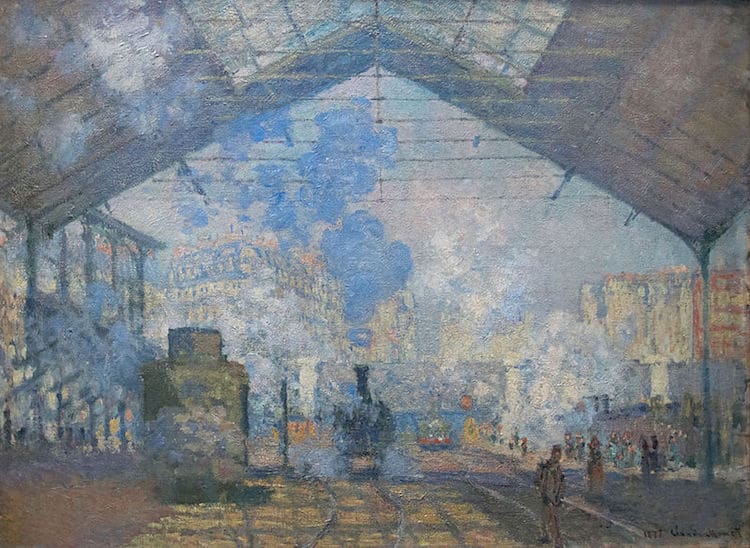Everyday Life in France
Woman with a Parasol

“Woman with a Parasol,” 1875 (Photo: Wikimedia Commons Public Domain)
A portrait of Madame Monet and the couple’s young son, Woman with a Parasol (1875) was painted in Argenteuil, where the family lived from 1872 through 1878.
With animated brushstrokes and an energetic composition, the painting was likely completed outdoors. Though his wife—clad in a windswept gown and holding a pretty green parasol—is the focal point of the piece, her surroundings also play a prominent role in the composition. Monet’s fascination with the natural world is particularly apparent in his treatment of the grass and flowers, which are meticulously dappled with sunlight and shadows. “The richness I achieve comes from nature,” Monet explained, “the source of my inspiration.”
Poppy Field

“Poppy Field,” 1873 (Photo: Wikimedia Commons Public Domain)
Like Woman with a Parasol, Poppy Field (1873) portrays Monet’s wife and son as they explore the outdoors. This piece also showcases Monet’s interest in nature, as evident in the prominent field of poppies and focus on the receding landscape.
Additionally, Poppy Field exhibits a colorful tendency toward including “pops” of red in a composition, which Impressionist artists often employed.
The Saint-Lazare Station

“The Saint-Lazare Station,” 1877 (Photo: Wikimedia Commons Public Domain)
In 1877, Monet painted The Saint-Lazare Station, a piece that captures the hustle and bustle of a busy Parisian train station. Like most of his compositions, this work of art conveys a focus on light, though movement—particularly in the locomotives’ billowing steam—also prominently features.
This painting marks a fascinating shift in the artist’s career, as it introduced the urban landscape into his body of work and subsequently elevated the artist to a painter of modern life—a title he retained for the remainder of his career.
Related Articles:
20+ Brilliant Quotes About Art From Famous Artists and Great Creative Minds
Iconic Artists Who Have Immortalized Themselves Through Famous Self-Portraits
